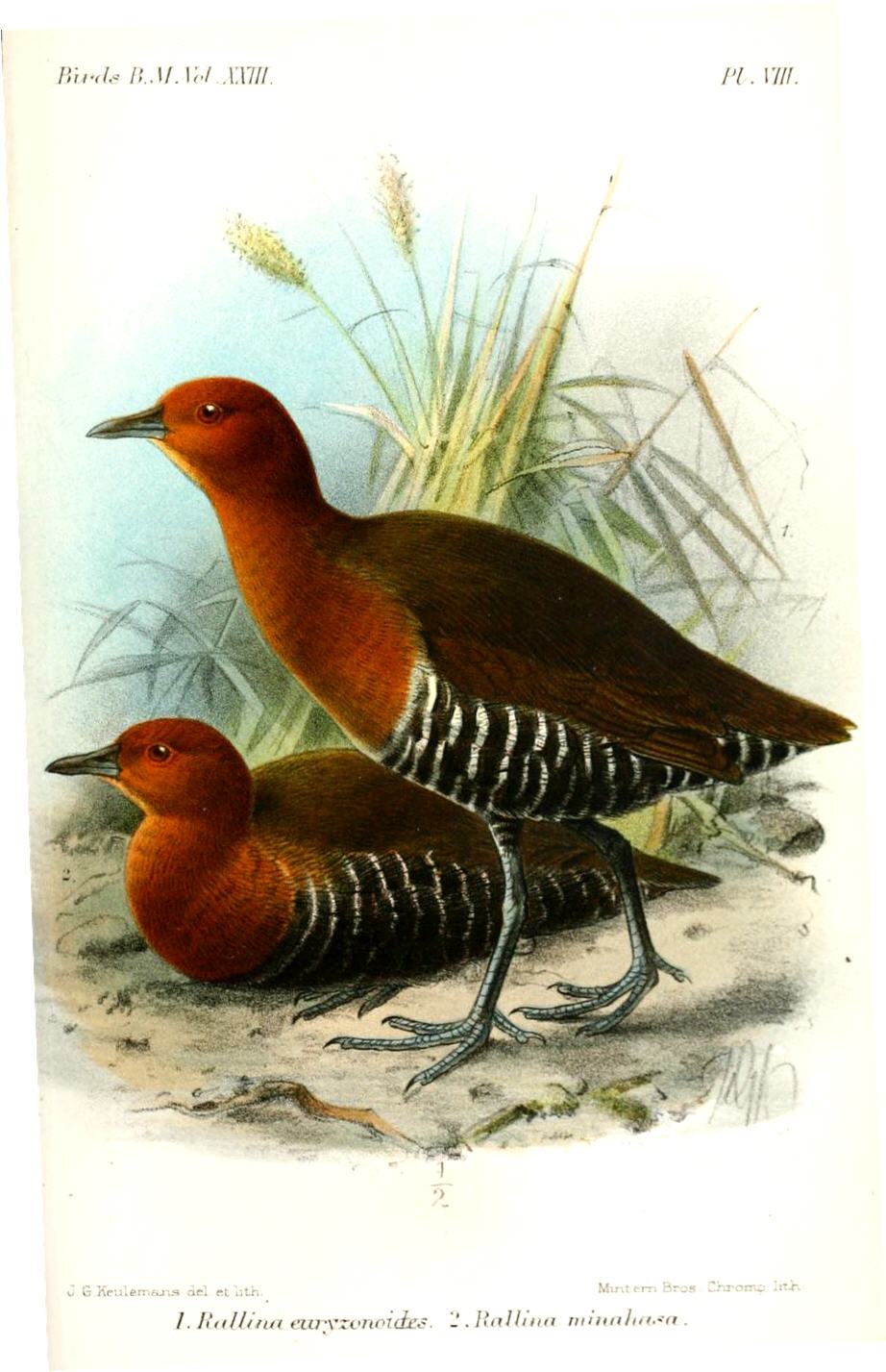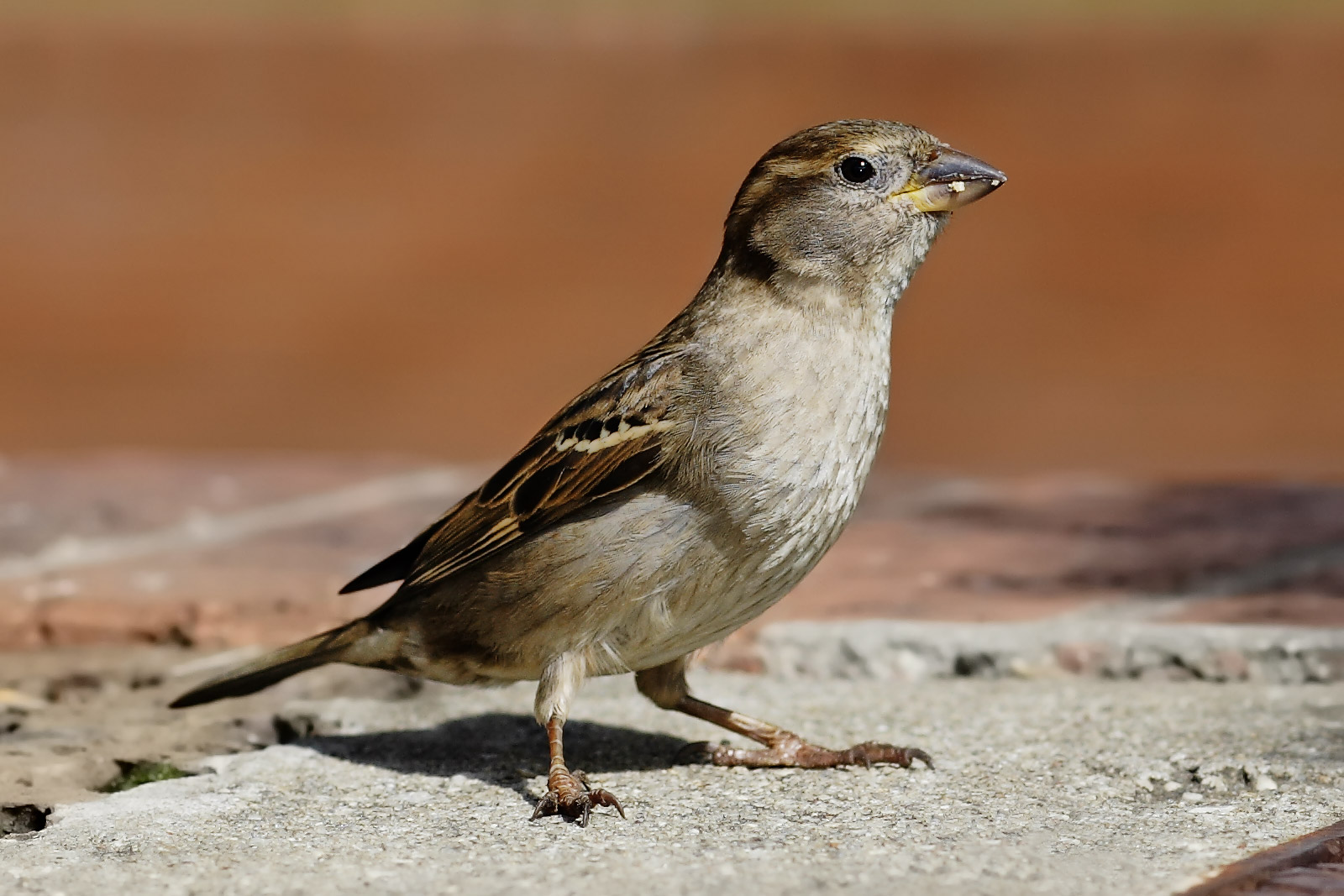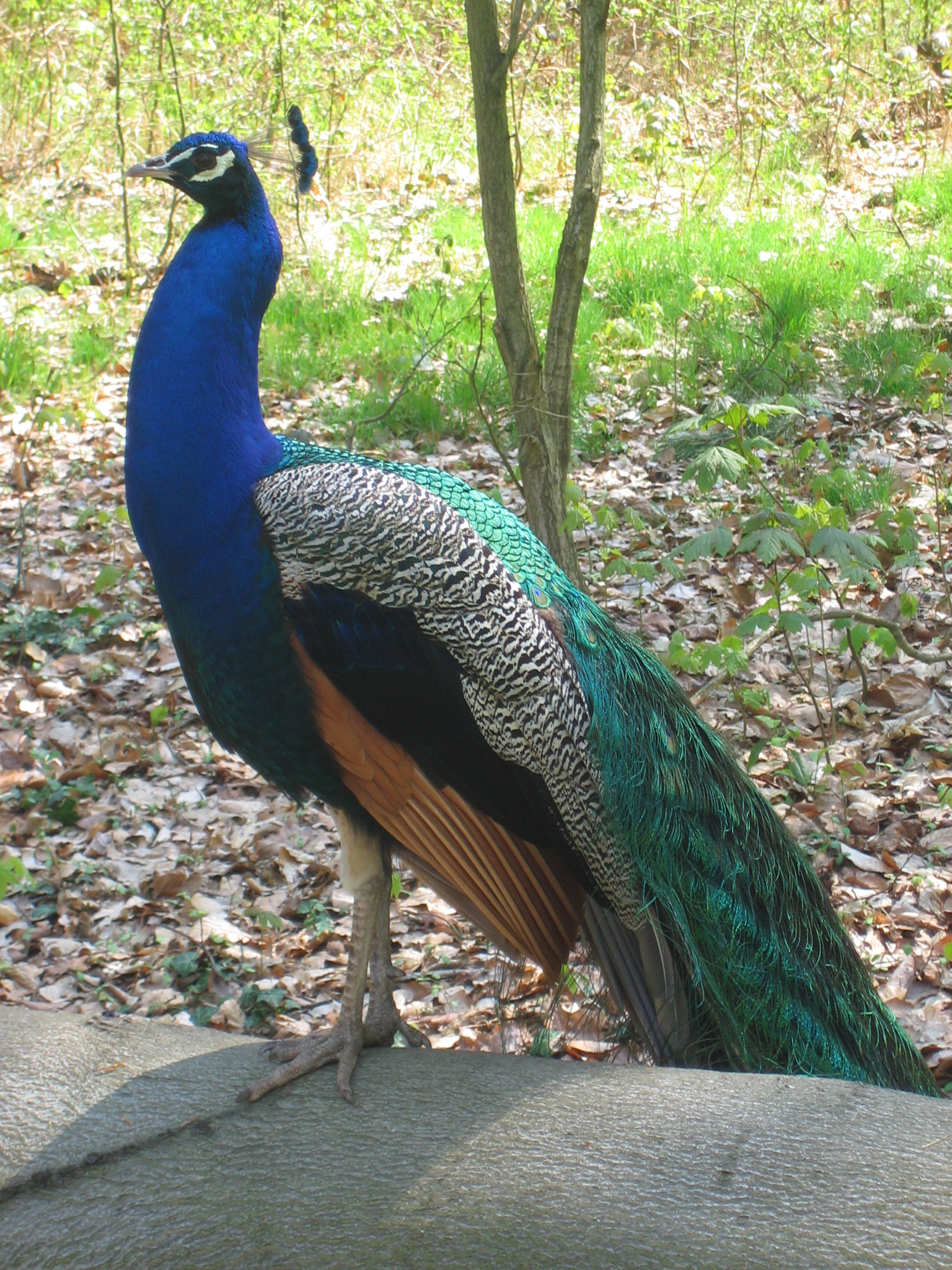|
Rallina Eurizonoides
The slaty-legged crake or banded crake (''Rallina eurizonoides'') is a waterbird in the rail and crake family, Rallidae. Distribution and habitat Its breeding habitat is swamps and similar wet areas in well-wooded country across south Asia east from India, Pakistan, and Sri Lanka to the Philippines and Indonesia. The rails are mainly permanent residents throughout their range, but some northern populations migrate further south in winter. Description The slaty-legged crake is about 25 cm long. Its body is flattened laterally to allow easier passage through the undergrowth. It has long toes and a short tail. Colouring includes a brown back, chestnut head and breast, and strong black-and-white barring on the flanks, belly and undertail. The throat is white, the bill is yellowish, and the legs are green. Sexes are similar; juveniles are dark brown above and below, although they have the belly barring and white throat. Behaviour Slaty-legged crakes are territorial, but ar ... [...More Info...] [...Related Items...] OR: [Wikipedia] [Google] [Baidu] |
Frédéric De Lafresnaye
Baron Nöel Frédéric Armand André de Lafresnaye (24 July 1783 – 14 July 1861) was a French ornithologist and collector. Lafresnaye was born into an aristocratic family at Chateau de La Fresnaye in Falaise, Normandy. He took an early interest in natural history, particularly entomology. It was only after acquiring a collection of European birds that he turned his attention to ornithology. Lafresnaye described a number of new bird species, some with Alcide d'Orbigny. He accumulated a collection of over 8,000 bird skins at his home. After his death the collection was purchased by the American collector Henry Bryant and donated to the Boston Natural History Society. It was transferred to the Museum of Comparative Zoology in 1914. Lafresnaye's piculet, Lafresnaye's woodcreeper and Lafresnaye's vanga are avian species that bear his name. Selected works * ''Contributions à l'ornithologie'', 1832 - Contributions to ornithology. * ''Catalogue des oiseaux de la collect ... [...More Info...] [...Related Items...] OR: [Wikipedia] [Google] [Baidu] |
Egg (biology)
An egg is an organic vessel grown by an animal to carry a possibly fertilization, fertilized egg cell (a zygote) and to egg incubation, incubate from it an embryo within the egg until the embryo has become an animal fetus that can survive on its own, at which point the animal hatches. Most arthropods, vertebrates (excluding live-bearing mammals), and Mollusca, mollusks lay eggs, although some, such as scorpions, do not. Reptile eggs, bird eggs, and monotreme eggs are laid out of water and are surrounded by a protective eggshell, shell, either flexible or inflexible. Eggs laid on land or in nests are usually kept within a warm and favorable temperature range while the embryo grows. When the embryo is adequately developed it hatches, i.e., breaks out of the egg's shell. Some embryos have a temporary egg tooth they use to crack, pip, or break the eggshell or covering. The largest recorded egg is from a whale shark and was in size. Whale shark eggs typically hatch within the m ... [...More Info...] [...Related Items...] OR: [Wikipedia] [Google] [Baidu] |
Birds Described In 1845
Birds are a group of warm-blooded vertebrates constituting the class (biology), class Aves (), characterised by feathers, toothless beaked jaws, the Oviparity, laying of Eggshell, hard-shelled eggs, a high Metabolism, metabolic rate, a four-chambered heart, and a strong yet lightweight Bird skeleton, skeleton. Birds live worldwide and range in size from the bee hummingbird to the common ostrich. There are over 11,000 living species and they are split into 44 Order (biology), orders. More than half are passerine or "perching" birds. Birds have Bird wing, wings whose development varies according to species; the only known groups without wings are the extinct moa and elephant birds. Wings, which are modified forelimbs, gave birds the ability to fly, although further evolution has led to the Flightless bird, loss of flight in some birds, including ratites, penguins, and diverse endemism, endemic island species. The digestive and respiratory systems of birds are also uniquely a ... [...More Info...] [...Related Items...] OR: [Wikipedia] [Google] [Baidu] |
Birds Of Southeast Asia
Birds are a group of warm-blooded vertebrates constituting the class Aves (), characterised by feathers, toothless beaked jaws, the laying of hard-shelled eggs, a high metabolic rate, a four-chambered heart, and a strong yet lightweight skeleton. Birds live worldwide and range in size from the bee hummingbird to the common ostrich. There are over 11,000 living species and they are split into 44 orders. More than half are passerine or "perching" birds. Birds have wings whose development varies according to species; the only known groups without wings are the extinct moa and elephant birds. Wings, which are modified forelimbs, gave birds the ability to fly, although further evolution has led to the loss of flight in some birds, including ratites, penguins, and diverse endemic island species. The digestive and respiratory systems of birds are also uniquely adapted for flight. Some bird species of aquatic environments, particularly seabirds and some waterbirds, have fur ... [...More Info...] [...Related Items...] OR: [Wikipedia] [Google] [Baidu] |
Birds Of Taiwan
Birds are a group of warm-blooded vertebrates constituting the class Aves (), characterised by feathers, toothless beaked jaws, the laying of hard-shelled eggs, a high metabolic rate, a four-chambered heart, and a strong yet lightweight skeleton. Birds live worldwide and range in size from the bee hummingbird to the common ostrich. There are over 11,000 living species and they are split into 44 orders. More than half are passerine or "perching" birds. Birds have wings whose development varies according to species; the only known groups without wings are the extinct moa and elephant birds. Wings, which are modified forelimbs, gave birds the ability to fly, although further evolution has led to the loss of flight in some birds, including ratites, penguins, and diverse endemic island species. The digestive and respiratory systems of birds are also uniquely adapted for flight. Some bird species of aquatic environments, particularly seabirds and some waterbirds ... [...More Info...] [...Related Items...] OR: [Wikipedia] [Google] [Baidu] |
Birds Of Hainan
Birds are a group of warm-blooded vertebrates constituting the class Aves (), characterised by feathers, toothless beaked jaws, the laying of hard-shelled eggs, a high metabolic rate, a four-chambered heart, and a strong yet lightweight skeleton. Birds live worldwide and range in size from the bee hummingbird to the common ostrich. There are over 11,000 living species and they are split into 44 orders. More than half are passerine or "perching" birds. Birds have wings whose development varies according to species; the only known groups without wings are the extinct moa and elephant birds. Wings, which are modified forelimbs, gave birds the ability to fly, although further evolution has led to the loss of flight in some birds, including ratites, penguins, and diverse endemic island species. The digestive and respiratory systems of birds are also uniquely adapted for flight. Some bird species of aquatic environments, particularly seabirds and some waterbirds, have furth ... [...More Info...] [...Related Items...] OR: [Wikipedia] [Google] [Baidu] |
Birds Of Nepal
Birds are a group of warm-blooded vertebrates constituting the class Aves (), characterised by feathers, toothless beaked jaws, the laying of hard-shelled eggs, a high metabolic rate, a four-chambered heart, and a strong yet lightweight skeleton. Birds live worldwide and range in size from the bee hummingbird to the common ostrich. There are over 11,000 living species and they are split into 44 orders. More than half are passerine or "perching" birds. Birds have wings whose development varies according to species; the only known groups without wings are the extinct moa and elephant birds. Wings, which are modified forelimbs, gave birds the ability to fly, although further evolution has led to the loss of flight in some birds, including ratites, penguins, and diverse endemic island species. The digestive and respiratory systems of birds are also uniquely adapted for flight. Some bird species of aquatic environments, particularly seabirds and some waterbir ... [...More Info...] [...Related Items...] OR: [Wikipedia] [Google] [Baidu] |
Birds Of India
This is a list of the bird species of India and includes Extant taxon, extant and recently extinct species recorded within the political limits of the Republic of India as defined by the Indian government. There have been 1393 species recorded as of 2025, of which 84 are Endemism in birds, endemic to the country. 98 species are globally threatened. The Indian peafowl (''Pavo cristatus'') is the national bird of India. This list does not cover species in Indian jurisdiction areas such as Dakshin Gangotri and oceanic species are delineated by an arbitrary cutoff distance. The list does not include fossil bird species or escapees from captivity. This list's Taxonomy (biology), taxonomic treatment (designation and sequence of orders, families and species) and nomenclature (common and scientific names) follow the conventions of the IOC World Bird List, version 13.1. This list also uses British English throughout. Any bird names or other wording follows that convention. The following ... [...More Info...] [...Related Items...] OR: [Wikipedia] [Google] [Baidu] |
Rallina
''Rallina'' is a genus of bird in the rail family, Rallidae. It contains four species found in forest and marshland in Asia and Australasia. They are 18–34 cm long and mainly chestnut or brown, often with black and white markings. Four African species formerly usually placed in ''Rallina'' are now placed in the genus ''Rallicula''; some taxonomic authorities continue to place them in ''Rallina'', but as the pronounced sexual dimorphism of ''Rallicula'' shows, they are no true rails at all, but instead belong to the recently separated (though outwardly similar) flufftail family Sarothruridae. Species The genus contains the following four species: A fifth ''Rallina'' species, the Great Nicobar crake, was proposed but not formally described in 2012. As of 2023, the supposed new species was only recorded twice, in 2011 and 2015; however, in 2021 populations of Red-legged and Slaty-legged crakes were discovered to inhabit Great Nicobar Island. It is thus more likel ... [...More Info...] [...Related Items...] OR: [Wikipedia] [Google] [Baidu] |
Kerala
Kerala ( , ) is a States and union territories of India, state on the Malabar Coast of India. It was formed on 1 November 1956, following the passage of the States Reorganisation Act, by combining Malayalam-speaking regions of the erstwhile regions of Kingdom of Cochin, Cochin, Malabar District, Malabar, South Canara, and Travancore. Spread over , Kerala is the 14th List of states and union territories of India by area, smallest Indian state by area. It is bordered by Karnataka to the north and northeast, Tamil Nadu to the east and south, and the Laccadive Sea, Lakshadweep Sea to the west. With 33 million inhabitants as per the 2011 Census of India, 2011 census, Kerala is the List of states of India by population, 13th-largest Indian state by population. It is divided into 14 List of districts of Kerala, districts with the capital being Thiruvananthapuram. Malayalam is the most widely spoken language and is also the official language of the state. The Chera dynasty was the f ... [...More Info...] [...Related Items...] OR: [Wikipedia] [Google] [Baidu] |








